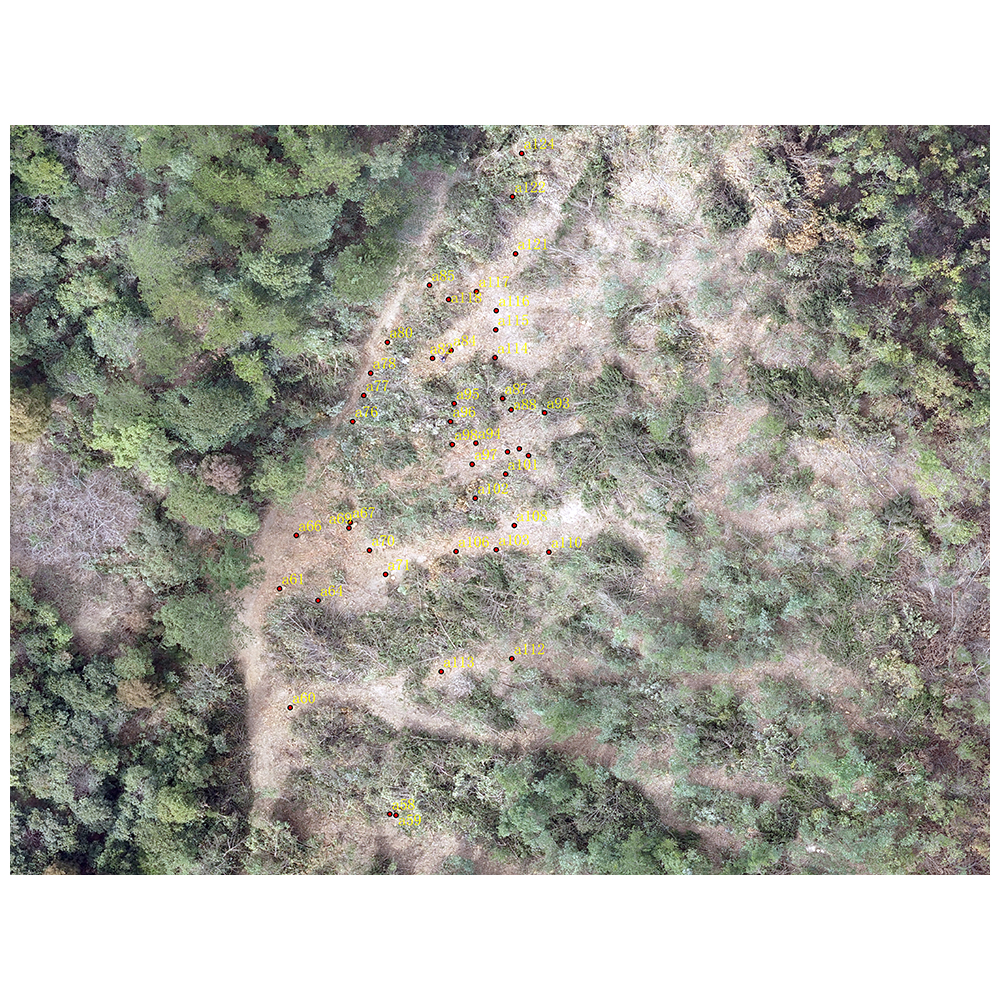Young Researcher Paper Award 2023
🥇Winners
🥇Winners
Print: ISSN 0914-4935
Online: ISSN 2435-0869
Sensors and Materials
is an international peer-reviewed open access journal to provide a forum for researchers working in multidisciplinary fields of sensing technology.
Online: ISSN 2435-0869
Sensors and Materials
is an international peer-reviewed open access journal to provide a forum for researchers working in multidisciplinary fields of sensing technology.
Tweets by Journal_SandM
Sensors and Materials
is covered by Science Citation Index Expanded (Clarivate Analytics), Scopus (Elsevier), and other databases.
Instructions to authors
English 日本語
Instructions for manuscript preparation
English 日本語
Template
English
Publisher
MYU K.K.
Sensors and Materials
1-23-3-303 Sendagi,
Bunkyo-ku, Tokyo 113-0022, Japan
Tel: 81-3-3827-8549
Fax: 81-3-3827-8547
MYU Research, a scientific publisher, seeks a native English-speaking proofreader with a scientific background. B.Sc. or higher degree is desirable. In-office position; work hours negotiable. Call 03-3827-8549 for further information.

MYU Research
(proofreading and recording)

MYU K.K.
(translation service)

The Art of Writing Scientific Papers
(How to write scientific papers)
(Japanese Only)
is covered by Science Citation Index Expanded (Clarivate Analytics), Scopus (Elsevier), and other databases.
Instructions to authors
English 日本語
Instructions for manuscript preparation
English 日本語
Template
English
Publisher
MYU K.K.
Sensors and Materials
1-23-3-303 Sendagi,
Bunkyo-ku, Tokyo 113-0022, Japan
Tel: 81-3-3827-8549
Fax: 81-3-3827-8547
MYU Research, a scientific publisher, seeks a native English-speaking proofreader with a scientific background. B.Sc. or higher degree is desirable. In-office position; work hours negotiable. Call 03-3827-8549 for further information.

MYU Research
(proofreading and recording)

MYU K.K.
(translation service)

The Art of Writing Scientific Papers
(How to write scientific papers)
(Japanese Only)
Sensors and Materials, Volume 34, Number 11(2) (2022)
Copyright(C) MYU K.K.
Copyright(C) MYU K.K.
|
pp. 3989-4000
S&M3091 Research Paper of Special Issue https://doi.org/10.18494/SAM3996 Published: November 16, 2022 Estimation of Volume of Felled Chinese Fir Trees Using Unmanned Aerial Vehicle Oblique Photography [PDF] Jian-hua Hou, Jian-ying Wang, Xue-xin Ma, and Dan Liang (Received June 20, 2022; Accepted September 13, 2022) Keywords: Chinese fir, cutting, volume, UAV remote sensing, tree height, root diameter
In forestry supervision, timely and accurate estimation of the felled tree volume is a very important task. Obtaining the felled tree volume by remote sensing using an unmanned aerial vehicle (UAV) is an effective means to reduce cost. Quantitative inversion of the felled tree volume of individual trees by visible light remote sensing using a UAV has major advantages but its accuracy is still a common concern in practice. The objective of this paper is to verify the feasibility and reliability of quantitative inversion of the felled tree volume by UAV visible light remote sensing. The proposed workflow is as follows. Firstly, raw images are obtained by UAV oblique photography and processed into a digital orthophoto map (DOM) and digital surface model (DSM) based on 3D reconstruction technology implemented in DJI Terra software. Secondly, based on before- and after-cutting DSM data, treetops are extracted using the conventional local maximum method, then are matched to the corresponding stump points. The tree height of the felled tree is estimated from the elevation difference between the treetop and the stump. Using the after-cutting DOM data, the root diameter and the geometric center of the felled tree are determined by the proposed circumcircle method. Thirdly, three regression models [estimated tree height and measured tree height, measured tree height and measured diameter at breast height (DBH), and measured root diameter and measured DBH] are tested to verify the correlation between the main parameters of the volume model. Lastly, three volume models [unary tree height–volume model (M1), unary root diameter–volume model (M2), and binary tree height and root diameter–volume model (M3)] are built and compared and analyzed through the calculation of the felled tree volume, taking the measured volume as the reference data. The experimental results showed that the correlation coefficient and root mean square error of the three volume models are 0.9093 and 0.1233, 0.9589 and 0.0831, and 0.9796 and 0.0584, respectively. This study demonstrates that by combining UAV visible light remote sensing with artificial intelligence, highly intelligent forest harvesting supervision can be achieved at a much lower cost than traditional field investigation.
Corresponding author: Dan Liang  This work is licensed under a Creative Commons Attribution 4.0 International License. Cite this article Jian-hua Hou, Jian-ying Wang, Xue-xin Ma, and Dan Liang, Estimation of Volume of Felled Chinese Fir Trees Using Unmanned Aerial Vehicle Oblique Photography, Sens. Mater., Vol. 34, No. 11, 2022, p. 3989-4000. |
Forthcoming Regular Issues
Forthcoming Special Issues
Applications of Novel Sensors and Related Technologies for Internet of Things
Guest editor, Teen-Hang Meen (National Formosa University), Wenbing Zhao (Cleveland State University), and Cheng-Fu Yang (National University of Kaohsiung)
Call for paper
Special Issue on Advanced Data Sensing and Processing Technologies for Smart Community and Smart Life
Guest editor, Tatsuya Yamazaki (Niigata University)
Call for paper
Special Issue on Advanced Sensing Technologies and Their Applications in Human/Animal Activity Recognition and Behavior Understanding
Guest editor, Kaori Fujinami (Tokyo University of Agriculture and Technology)
Call for paper
Special Issue on International Conference on Biosensors, Bioelectronics, Biomedical Devices, BioMEMS/NEMS and Applications 2023 (Bio4Apps 2023)
Guest editor, Dzung Viet Dao (Griffith University) and Cong Thanh Nguyen (Griffith University)
Conference website
Call for paper
Special Issue on Piezoelectric Thin Films and Piezoelectric MEMS
Guest editor, Isaku Kanno (Kobe University)
Call for paper
Special Issue on Advanced Micro/Nanomaterials for Various Sensor Applications (Selected Papers from ICASI 2023)
Guest editor, Sheng-Joue Young (National United University)
Conference website
Call for paper
-
For more information of Special Issues (click here)
-
Special Issue on Advanced Micro/Nanomaterials for Various Sensor Applications (Selected Papers from ICASI 2024)
- Accepted papers (click here)
- A Prototype Portable Voltammetric Sensor for Determining Titratable Acidity of Sake and Moromi
Akira Kotani, Kokoro Taniguchi, Koichi Machida, Kazuhiro Yamamoto, and Hideki Hakamata - PACKTEST for L-Glutamate Quantification: Development of On-site and High-throughput Analytical Kits using L-Glutamate Oxidase Mutant
Keita Murai, Hiroki Yamaguchi, Satoru Furuuchi, Kazutoshi Takahashi, Uno Tagami, Moemi Tatsumi, Toshimi Mizukoshi, Hiroshi Miyano, Shuntaro Okauchi, and Masayuki Sugiki - Development of Portable Multi-fluorescence Detection System Using Indium Tin Oxide Heater for Loop-mediated Isothermal Amplification
Ryo Ishii, Sota Hirose, Shoji Yamamoto, Kazuhiro Morioka, Akihide Hemmi, and Hizuru Nakajima - Improved Substrate Specificity of Phenylalanine Dehydrogenase for L-Phenylalanine Sensor
Moemi Tatsumi, Kazutoshi Takahashi, Hiroki Yamaguchi, Uno Tagami, Hiroshi Miyano, Toshimi Mizukoshi, and Masayuki Sugiki - Reproduction of Absorption Spectra of Bromothymol Blue–Methyl Red Mixed Indicator from RGB and L*a*b* Color Coordinates and Application to Fast Spectrum Acquisition
Yusuke Kimura, Arinori Inagawa, and Nobuo Uehara - Orthogonality of α-Sulfoquinovosidase in Human Cells and Development of Its Fluorescent Substrate
Ryosuke Yoshida, Ryosei Kaguma, Ryosuke Kaneko, Ichiro Matuso, Makoto Yoritate, Go Hirai, Takamasa Teramoto, Yoshimitsu Kakuta, Kosuke Minamihata, Noriho Kamiya, Teruki Nii, Akihiro Kishimura, Takeshi Mori, and Yoshiki Katayama
- A Prototype Portable Voltammetric Sensor for Determining Titratable Acidity of Sake and Moromi
- Accepted papers (click here)
- Healthcare System from Multisensor Collaboration and Human Action Recognition
Hongwei Gao, Xuna Wang, Zide Liu, and Yueqiu Jiang
- Healthcare System from Multisensor Collaboration and Human Action Recognition
Guest editor, Sheng-Joue Young (National United University)
Conference website
Call for paper
Special Issue on Asia-Pacific Conference of Transducers and Micro-Nano Technology 2024 (APCOT 2024)
Guest editor, Guangya ZHOU (National University of Singapore) and Chengkuo LEE (National University of Singapore)
Conference website
Call for paper
Special Issue on Sensing and Information and Communication Technologies toward Non-intrusive, Undisturbed, and Calm Healthcare Monitoring
Guest editor, Kosuke Motoi (Shizuoka Institute of Science and Technology)
Call for paper
Special Issue on Sensor for Society
Guest editor, Arinori Inagawa (Utsunomiya University), Yukiko Moriiwa (Tokyo University of Pharmacy and Life Sciences), and Atsushi Shoji (Tokyo University of Pharmacy and Life Sciences)
Call for paper
Special Issue on Materials, Devices, Circuits, and Analytical Methods for Various Sensors (Selected Papers from ICSEVEN 2023)
Guest editor, Chien-Jung Huang (National University of Kaohsiung), Mu-Chun Wang (Minghsin University of Science and Technology), Shih-Hung Lin (Chung Shan Medical University), Ja-Hao Chen (Feng Chia University)
Special Issue on Materials, Devices, Circuits, and Analytical Methods for Various Sensors (Selected Papers from ICSEVEN 2024)
Guest editor, Chien-Jung Huang (National University of Kaohsiung), Mu-Chun Wang (Minghsin University of Science and Technology), Shih-Hung Lin (Chung Shan Medical University), Ja-Hao Chen (Feng Chia University)
Conference website
Call for paper
Special Issue on Sensing and Data Analysis Technologies for Living Environment, Health Care, Production Management, and Engineering/Science Education Applications (2023)
Guest editor, Chien-Jung Huang (National University of Kaohsiung), Rey-Chue Hwang (I-Shou University), Ja-Hao Chen (Feng Chia University), Ba-Son Nguyen (Lac Hong University)
Special Issue on Sensing and Data Analysis Technologies for Living Environment, Health Care, Production Management, and Engineering/Science Education Applications (2024)
Guest editor, Chien-Jung Huang (National University of Kaohsiung), Rey-Chue Hwang (I-Shou University), Ja-Hao Chen (Feng Chia University), Ba-Son Nguyen (Lac Hong University)
Call for paper
Special Issue on 2D Materials-based Sensors and MEMS/NEMS
Guest editor, Kazuhiro Takahashi (Toyohashi University of Technology)
Call for paper
Special Issue on Biosensing Technology Using Micro- and Nanostructures
Guest editor, Kazuhiro Morioka and Atsushi Shoji (Tokyo University of Pharmacy and Life Sciences)
Call for paper
Special Issue on Advanced Sensors Materials and Processes
Guest editor, Shih-Chen Shi (National Cheng Kung University) and Tao-Hsing Chen (National Kaohsiung University of Science and Technology)
Call for paper
Special Issue on Advanced Sensing Technologies for Green Energy
Guest editor, Yong Zhu (Griffith University)
Call for paper
Special Issue on Spatial Information and Digital Twins for Built Environment Development
Guest editor, Dong Ha Lee (Kangwon National University), Myeong Hun Jeong (Chosun University), Jaekang Lee (Dong-A University), Jisoo Park (Indiana State University), and Sungjin Kim (Hanbat National University)
Call for paper
Special Issue on Mobile Computing and Ubiquitous Networking for IoT Society
Guest editor, Takuya Yoshihiro (Wakayama University) and Shigemi Ishida (Future University Hakodate)
Call for paper
Special Issue on Intelligent Sensing and Analysis for Human–Machine Interaction in Healthcare, Biomedical Engineering, and Human-Centered Industrie
Guest editor, Dalin Zhou (University of Portsmouth), Jiahui Yu (Zhejiang University), Yuichiro Toda (Okayama University), and Zhaojie Ju (University of Portsmouth)
Call for paper
Special Issue on Multisource Sensors for Geographic Spatiotemporal Analysis and Social Sensing Technology
Guest editor, Prof. Xiang Lei Liu (Beijing University of Civil Engineering and Architecture) and Prof. Bogang Yang (Beijing Institute of Surveying and Mapping)
Call for paper
Special Issue on Geomatics Technologies for the Realization of Smart Cities
Guest editor, Prof. He Huang (Beijing University of Civil Engineering and Architecture) and Prof. Junxing Yang (Beijing University of Civil Engineering and Architecture)
Call for paper
Special Issue on New Functions of Micro/Nanomaterials and Devices
Guest editor, Takahiro Namazu (Kyoto University of Advanced Science)
Call for paper
Special Issue on Smart Sensing Approaches for Low Carbon, Energy-efficient Manufacturing Processes
Guest editor, Cheng-Chi Wang (National Sun Yat-sen University)
Call for paper
Special Issue on Smart Sensors for Chemical and Agriculture Applications
Guest editor, Kazuaki Sawada (Toyohashi University of Technology)
Call for paper
- Accepted papers (click here)
Copyright(C) MYU K.K. All Rights Reserved.
